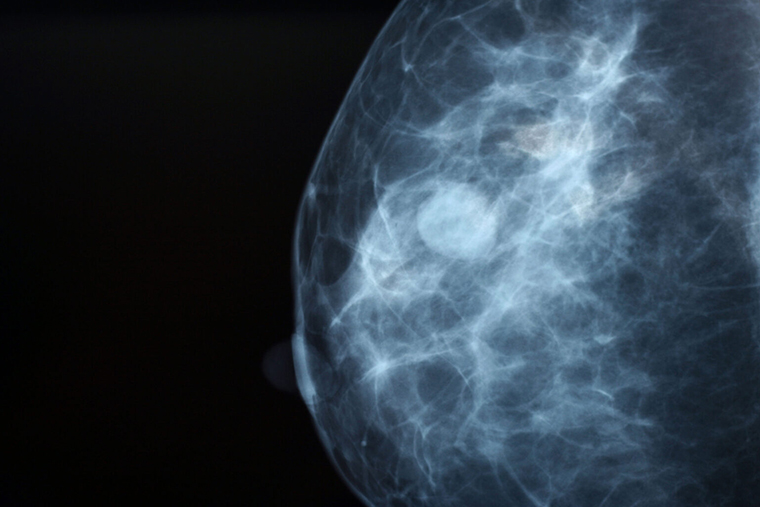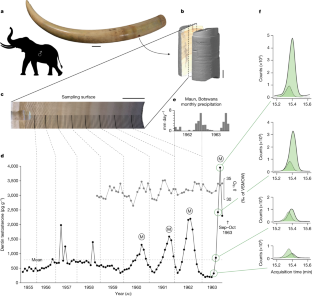2023-05-05 ワシントン大学セントルイス校

Repeated mammograms contain data on changes in breast density over time that could help identify women at high risk of breast cancer and even reveal which breast is likely to be affected, according to a study by researchers at Washington University School of Medicine in St. Louis. (Image: Getty Images)
◆研究者らは、約1,000人の女性に対して10年間の乳房密度の変化を数学モデルを用いて追跡し、がんに罹患する可能性の高い女性とそうでない女性で、密度の変化が異なることを発見した。今後、この結果を元にリスクアルゴリズムを改良し、追加スクリーニングを必要とする女性を特定する取り組みにつながるとしている。
<関連情報>
- https://medicine.wustl.edu/news/change-in-breast-density-over-time-linked-to-cancer-risk/
- https://jamanetwork.com/journals/jamaoncology/fullarticle/2804130
各乳房のマンモグラフィ密度の変化と乳がんリスクとの関連についての縦断的解析 Longitudinal Analysis of Change in Mammographic Density in Each Breast and Its Association With Breast Cancer Risk
Shu Jiang, Debbie L. Bennett, Bernard A. Rosner, Graham A. Colditz
JAMA Oncology Published: April 27, 2023
DOI:doi:10.1001/jamaoncol.2023.0434
Key Points
Question Is change in mammographic breast density associated with the development of breast cancer, and does this change diverge from the expected decrease in density with age?
Findings In this nested case-control cohort study of 947 women attending breast screening during up to 10 years, a decrease in breast density was observed in all women regardless of subsequent breast cancer development. The rate of density change was significantly slower in the breast in which cancer was later diagnosed.
Meaning This study found that evaluating longitudinal changes in breast density from digital mammograms may offer an additional tool for assessing risk of breast cancer and subsequent risk reduction strategies.
Abstract
Importance Although breast density is an established risk factor for breast cancer, longitudinal changes in breast density have not been extensively studied to determine whether this factor is associated with breast cancer risk.
Objective To prospectively evaluate the association between change in mammographic density in each breast over time and risk of subsequent breast cancer.
Design, Setting, and Participants This nested case-control cohort study was sampled from the Joanne Knight Breast Health Cohort of 10 481 women free from cancer at entry and observed from November 3, 2008, to October 31, 2020, with routine screening mammograms every 1 to 2 years, providing a measure of breast density. Breast cancer screening was provided for a diverse population of women in the St Louis region. A total of 289 case patients with pathology-confirmed breast cancer were identified, and approximately 2 control participants were sampled for each case according to age at entry and year of enrollment, yielding 658 controls with a total number of 8710 craniocaudal-view mammograms for analysis.
Exposures Exposures included screening mammograms with volumetric percentage of density, change in volumetric breast density over time, and breast biopsy pathology-confirmed cancer. Breast cancer risk factors were collected via questionnaire at enrollment.
Main Outcomes and Measures Longitudinal changes over time in each woman’s volumetric breast density by case and control status.
Results The mean (SD) age of the 947 participants was 56.67 (8.71) years at entry; 141 were Black (14.9%), 763 were White (80.6%), 20 were of other race or ethnicity (2.1%), and 23 did not report this information (2.4%). The mean (SD) interval was 2.0 (1.5) years from last mammogram to date of subsequent breast cancer diagnosis (10th percentile, 1.0 year; 90th percentile, 3.9 years). Breast density decreased over time in both cases and controls. However, there was a significantly slower decrease in rate of decline in density in the breast that developed breast cancer compared with the decline in controls (estimate = 0.027; 95% CI, 0.001-0.053; P = .04).
Conclusions and Relevance This study found that the rate of change in breast density was associated with the risk of subsequent breast cancer. Incorporation of longitudinal changes into existing models could optimize risk stratification and guide more personalized risk management.


